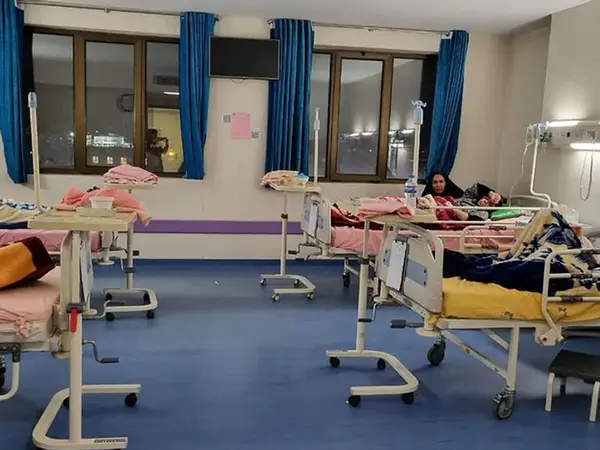A popular dissident Twitter account, 1500tasvir, says preliminary results of tests done on clothing of poisoned schoolgirls in Iran suggests the use of a nerve agent.
In a series of tweets Wednesday, the group which is based abroad said samples of clothing of poisoned students it had received from Iran were tested by a group of experts who used the GC-MS technique to detect the gases absorbed by the clothing.
Tests indicated that the clothing items had been exposed to a set of molecular masses including those with a mass of 99 which suggested the presence of fluoromethyl phosphate, the report said, adding that fluoromethyl phosphate is the common agent among many highly toxic gases such as sarin, cyclosarin, soman.
The 1500tasvir report also said identifying the exact type of gas used in the attacks requires two high-resolution mass spectroscopy experiments on the molecular mass which the experts will carry out and urged families of victims to send more samples including hair samples.
The poisonings started in the religious city of Qom in central Iran November 30, spread throughout the country, and continued until the end of April, sending hundreds of students to hospitals and at least one case of death was reported.
The city of Qom with a population of over 1.2 million is home to most of Iran's religious seminaries and an important Shiite shrine.
Many ordinary Iranians have been suspicious of involvement of the regime itself, or religious extremists protected by the regime, calling the attacks “state terrorism”. Some argued that because teenagers and young people were playing a major role during the protests, and many young girls had removed their headscarves in protest, regime hardliners wanted to punish them.
Some of the victims reported falling ill after an aroma, resembling tangerines, or a putrid stench filled the air in their classrooms. Hundreds had to be hospitalized with some staying in hospital for up to a week due to the severeness of their symptoms including palpitation, headache, nausea, cough, sore throat, or temporary paralysis and weakness but most others were released within hours. In some cases, symptoms lasted for weeks.
In a statement on April 28, the intelligence ministry denied any indication that poisonous substances had caused the illness of students and said samples taken from the scene of the incidents examined by “the most reliable laboratories” in the country had not yielded any suspicious materials.
The ministry claimed illness of students was caused by stink bombs (stinkpots), pepper sprays, tear gas and similar substances used by students to disrupt classes and accused “foreign enemies” and media outside Iran, particularly those broadcasting in Persian, of using school poisoning incidents to ignite unrest because the Mahsa protests that started in mid-September had begun to subside.
The ministry also mentioned spurious causes, such as gas fuel leak from vehicles and urban gas, smoke from trash burning outside schools, and mass psychogenic illness resulting from stress and said nearly all the students hospitalized following the incidents had recovered by simple treatments such as oxygen, saline and dextrose intravenous injections, and sedatives to treat anxiety.
During the height of the attacks, state media tried to downplay the seriousness of the incidents and authorities warned the local media to avoid reporting of the incidents.
